Soft, chewy, and sweet, Fig Newtons — as most of us still call them despite being rebranded to “Newtons” more than a decade ago — have been the quintessential packaged snack food for over a century. Despite possessing a distinctly retro feel, they were a marvel of engineering back in the 1890s when Philadelphia inventor James Henry Mitchell created a duplex dough-sheeting machine with funnels that allowed a sandwich of dough and fruit to be extruded at the same time. The process allowed filled biscuits to be made on an industrial scale, and quickly caught the attention of Nabisco’s predecessor, the Kennedy Biscuit Company. At the time, the branding strategy of the Massachusetts-based company was to name its products after surrounding towns, and while we may no longer remember such sweet confections as Shrewsburys, Harvards, and Beacon Hills, Newtons remain just as — if not more — famous as their geographical namesake.
One of the original selling points of Fig Newtons was their nutritional value. In the 19th century, doctors were regularly prescribing fruit and biscuits to cure many ailments, believing that diet was the best medicine, and Fig Newtons fit the bill. Medicine has changed drastically since then (thankfully), but the idea that Fig Newtons are healthy has stuck around. To determine whether this reputation is warranted, we spoke with two experts, Natalie Allen, clinical assistant professor of Nutrition and Dietetics at Missouri State University, and Emily Van Eck, a registered dietician and nutrition therapist.
Read more: 16 Little-Known Facts About Salt
Figs
Not surprisingly, Fig Newtons contain figs. In fact, the dark purple fruit is the first ingredient listed, meaning that there are more figs in the recipe than anything else. There isn’t much ambiguity about the nutritional value of this particular fruit. Figs are naturally sweet and full of fiber, magnesium, and potassium, all of which are healthy. However, Fig Newtons are not made of whole fruit that has just been harvested, and the nutritional value of any ingredient changes depending on how it is stored and processed. Freezing, pasteurizing, dehydrating, and cooking cause wear and tear on the nutritional profile of an ingredient, so when calculating how many nutrients the figs in a Fig Newton provide, it isn’t as straightforward as attributing the nutrition of a given weight of fresh figs with the same weight of Newton fig paste.
The precise production process for Fig Newtons remains a secret, but in an episode of “How It’s Made” that follows the production of Newman’s Own Fig Newmans, the fig filling is made by mixing blocks of dried fig paste with powdered cookies, corn syrup, salt, and sugar. Figs may be the largest ingredient by weight in Newtons, but that doesn’t mean the paste in the center of the cookies is pure fruit.
Flour
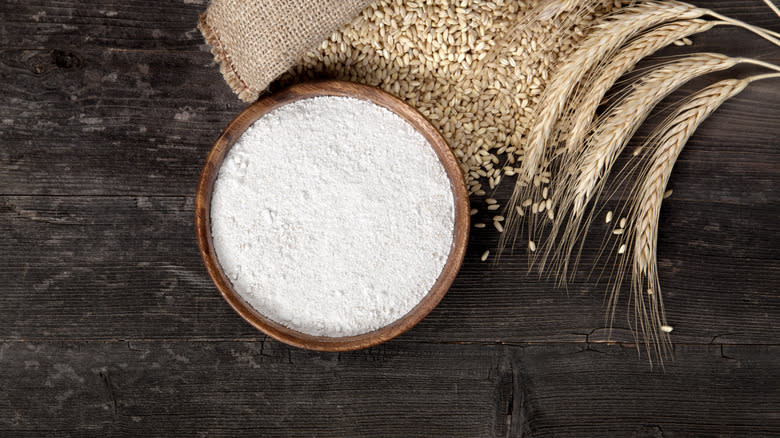
The next ingredient in Newtons is flour. First up is whole grain wheat flour, and second, after sugar, is unbleached enriched flour. Emily Van Eck explained how these two types of flour differ. “The nutrition differences between whole grain flour and enriched flour are due to the presence of the bran and germ in whole grain flour, which are removed to make white flour,” she said. “Whole grain flour contains more fiber than enriched flour. A piece of bread made with whole grain flour will have about 5g of fiber per serving compared to enriched flour at 1.5 grams per serving. Products made from whole grain flour have [a] lower glycemic index, due to their higher fiber content. Lower glycemic index foods will raise your blood sugar slower and more evenly than a higher [G.I.] food.” She also explained that whole flour contains higher amounts of vitamin E, magnesium, zinc, and B vitamins like thiamin, niacin, folic acid, and riboflavin.
“Enriched flour doesn’t contain these ‘naturally’ since the bran and germ are removed,” Van Eck continued, “[H]owever enriched flour has many vitamins and minerals added back to the flour. In fact, enriched flour typically contains slightly higher amounts of iron and many [B] vitamins compared with whole grain flour.”
Sugar
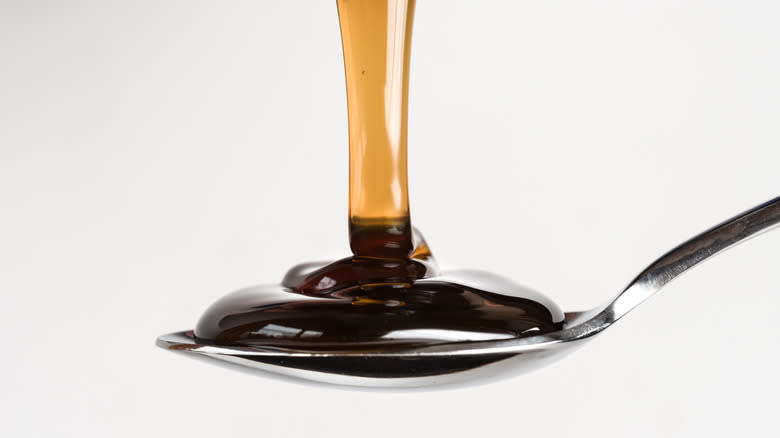
One of the ways that food labels can trick you is by separately listing different forms of the same ingredient. For example, in Newtons, there are three types of sugar — table sugar, corn syrup, and invert sugar –- which fall third, fifth, and sixth on the nutrition label, respectively. This suggests that, in combination, they make up a sizable proportion of the snack. Four Fig Newtons (about 58 grams) contain 24 grams of sugar, more than half of which (16 grams) comes from added sugar rather than figs. In comparison, a 53-gram Snickers bar contains 28 grams of sugar, demonstrating just how sugary Newtons are despite the emphasis on healthy whole grains and real fruit in much of their branding.
The types of sugar are also worth considering. Corn syrup is made by breaking down cornstarch through heat or by combining it with enzymes to convert some of the glucose (a form of sugar) into fructose, a sweeter form of sugar. It is more cost-effective than table sugar, making it an attractive option for manufacturers.
Invert sugar is made through a similar process as corn syrup, but with table sugar as the base ingredient instead of cornstarch. Like corn syrup, the process converts the base ingredient’s sugar into fructose, giving you more bang for your buck since fructose is sweeter.
Oil
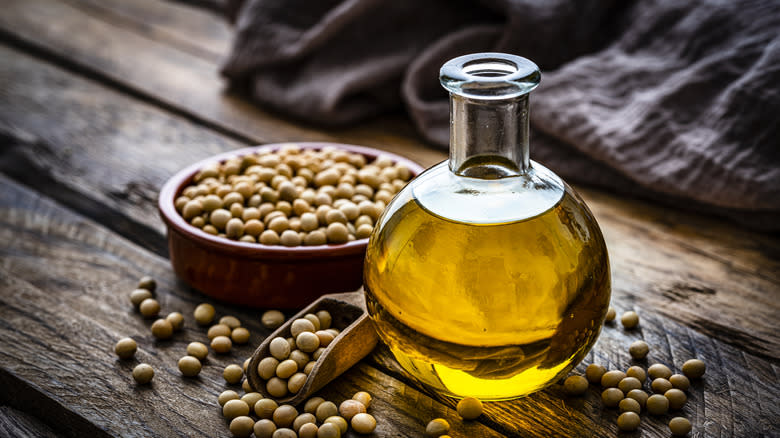
Like many baked goods, Newtons contain various types of oil, specifically palm oil, which is a saturated fat, and either canola or soybean oil, which are unsaturated fats. As Emily Van Eck explained, “It is pretty clear from decades of good quality research that higher unsaturated fat in the diet reduces the risk of cardiovascular disease and that higher saturated fat increases risk … Since palm oil contains a high amount of saturated fat, it’s wise to watch your intake of it overall. That said, [Fig Newtons] contain only 0.5 grams of saturated fat per package, so a very small amount in the grand scheme of things. Most health organizations recommend keeping your saturated fat intake at less than 10% of total calories, which is about 13 grams per day for someone eating 2000 calories per day.”
“Canola oil is perfectly healthy and high in polyunsaturated fatty acids,” she continued. “Soybean oil has slightly less evidence of its health-promoting properties, but is still good for you compared with palm oil and other saturated fats. Even though there are a good number of people blaming refined oils for many health problems, no good evidence exists that these unsaturated fats are harmful to humans, especially in moderate amounts.”
Salt

Sodium is one of the most common ingredients in processed foods, and it serves many purposes. Aside from its obvious enhancement of flavor (it makes up 40% of table salt), it also acts as a preservative, adds to the color of the product, and contributes to its texture. Although sodium is a necessary mineral for the body’s functioning, too much of it can raise blood pressure and increase the risks of heart disease and strokes. The CDC recommends that people limit their sodium intake to 2,300 milligrams or less per day, but estimates that Americans consume, on average, 3,400 milligrams per day.
Four Fig Newtons contain 190 milligrams of sodium, which accounts for 8% of the recommended daily intake. While that might not seem like much, it is similar to notoriously salty processed snacks. A 1-ounce bag of Doritos, for example, contains 210 milligrams of sodium, while a 1-ounce serving of Fritos contains only 160 milligrams. Considering that Fig Newtons don’t taste particularly salty, they are packing a lot of sodium.
Baking Soda And Calcium Lactate
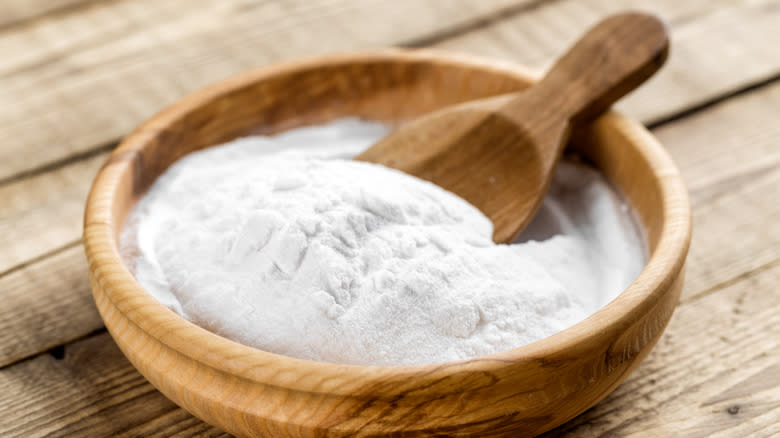
Another ingredient that helps account for all the sodium in Fig Newtons aside from salt is baking soda. As many home cooks will know, baking soda is widely used in baked foods as a leavening agent, usually in tandem with baking powder. It makes quick breads like cakes and cookies rise rapidly in the oven with no proofing time, in contrast with the slow rise of yeasted breads. It is used both by home cooks and in industrial settings, and is regarded as safe for these purposes.
Calcium lactate is less well-known to home bakers. Like baking soda, it has leavening properties, but its uses extend much further. It is found in everything from condiments to beer, providing flavor, texture, a longer shelf-life, and a decrease in acidity. It is also used to increase the calcium content in some products. You can even purchase calcium lactate over the counter as a supplement for bone and heart health. Like baking soda, it poses no health risks in small quantities.
Emulsifiers
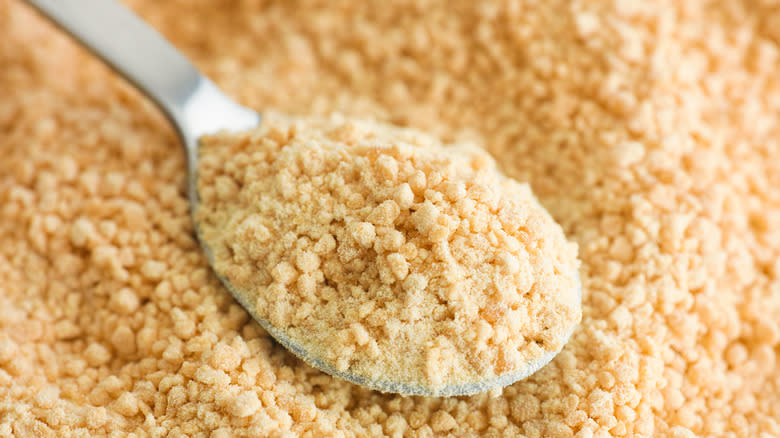
Check the ingredients list of any packaged snack food and you’re likely to see lecithin, an emulsifier extracted from soybeans and egg yolks. Soy lecithin has been used widely in the U.S. since the 1940s and serves a wide range of functions in food. In Fig Newtons, it is likely used at least in part as an emulsifier and is safe to consume in small quantities. As Natalie Allen explained, “Emulsifiers give food a smooth texture and a longer shelf life. They also enhance flavor. The amount of lecithin in a standard serving size [of Fig Newtons] is small and generally not a concern.”
Soy lecithin performs the same function in baked goods as egg yolks, mitigating toughness, dryness, and staleness by, among other things, helping the ingredients absorb moisture. It also helps release flavor. Given this hefty list of benefits, it’s no wonder lecithin is such a frequent ingredient in processed foods. Even if you don’t see lecithin in the ingredients list of a given packaged food, you will likely see other emulsifiers, such as mono-and diglycerides and propylene glycol esters.
Preservatives
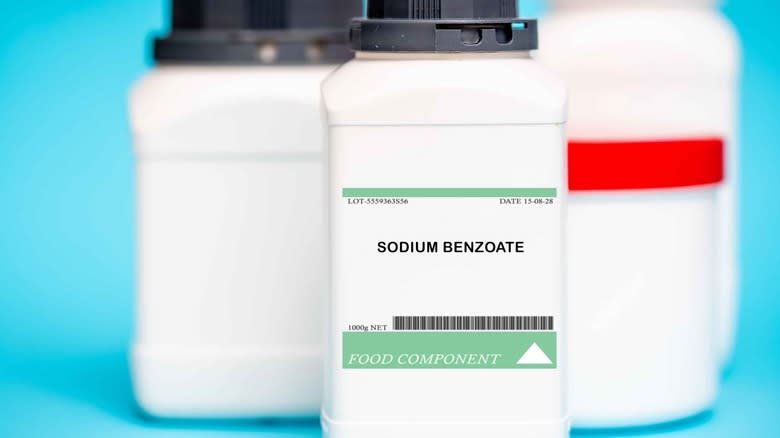
One of the key components to any packaged, processed snack food is preservatives. Have you ever bought a loaf of bread and watched it remain fluffy and mold-free for weeks on end? Compare this to a loaf of homemade bread, which might get moldy within 24 hours, and you’ll recognize exactly how valuable preservatives can be. There are two main categories of preservatives –- those that are derived naturally and those that are made in a lab. Naturally occurring preservatives include ascorbic acid (also known as vitamin C), citric acid, and vitamin E or tocopherols, all of which are extracted from the natural world, such as from fruit and nuts.
Synthetic preservatives include calcium phosphate, sodium benzoate, and sulfur dioxide, two of which are listed as ingredients in Fig Newtons. According to Natalie Allen, you don’t need to worry about them in small quantities. “The FDA has approved thousands of food additives and preservatives,” she explained. “In small amounts, food items that contain them are safe, but again, the key is moderation. Have a couple of Fig Newtons, not the whole box.”
Flavorings

Fig Newtons are labeled as having natural and artificial flavors, a phrase that you might have seen on countless packages of processed foods. This vague phrase gives manufacturers plenty of leeway, allowing them to pick and choose from a lengthy list of FDA-approved flavorings and not have to take up precious package space listing each one. Manufacturers are not required to label individual flavorings. For one thing, they only use trace amounts, and for another, they often use a combination to provide a single flavor. For example, to make a product taste like cherries, the manufacturer might use 10 different flavorings.
Emily Van Eck explained the difference between natural and artificial flavors and whether they have different health implications. “Artificial flavor and natural flavor are both describing an ingredient added to improve the flavor of a product,” she said. “Natural flavors are chemicals that are derived from plants and artificial flavors are chemicals made to mimic the flavor of a plant or other food or flavor. You can’t say that one is better than the other. Just because something says ‘natural flavor’ does not mean it’s better for you than something with ‘artificial flavor.'” In fact, in some cases, natural and artificial flavors are chemically identical, but manufacturers use the artificial option because it’s often cheaper to make it in a lab than extract it from a natural source. In some cases, the artificial version is more environmentally friendly as well.
They’re Nutritionally Comparable To Similar Options
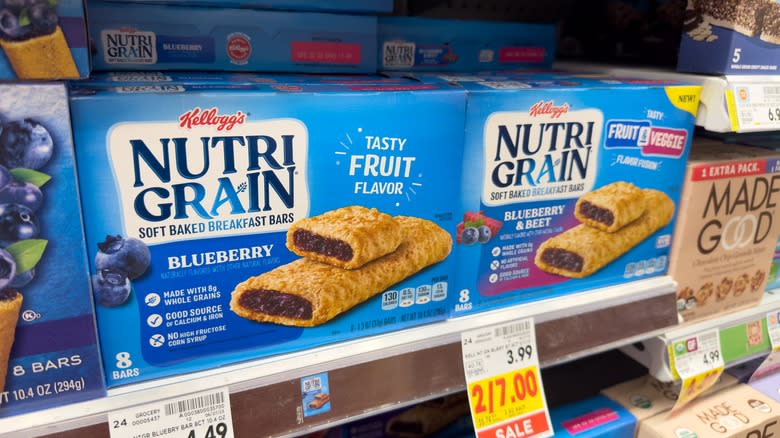
Compared to other soft, fruit-filled bars, Newtons do not stand out particularly well or particularly poorly. One 29-gram serving of Fig Newtons (two cookies) contains 100 calories, 12 grams of sugar, 1 gram of fiber (4% of the recommended daily intake), and no saturated fat. In comparison, one 37-gram Kellogg’s Nutri-Grain Bar contains 130 calories, 12 grams of sugar, 1 gram of fiber, and 0.5 grams of saturated fat. Meanwhile, one 32-gram serving of Newman’s Own Fig Newmans (two cookies) contains 100 calories, 10 grams of sugar, 1 gram of fiber, and no saturated fat.
Considering most of us ignore the suggested serving sizes and would therefore be unlikely to limit our snacking to two measly Fig Newtons, it’s safe to say that they are comparable to Nutri-Grain bars when taking the same volume into account. 37 grams of Fig Newtons is about 114 calories and 14 grams of sugar, making it comparable overall to its Kellogg’s.
A further consideration is that the categorization of baked, fruit-filled bars is subjective. Some people might think of them as breakfast bars, while others might think of them as cookies. Fig Newtons, Nutri-Grain Bars, and Fig Newmans all contain much more sugar than other snack bars. A 32-gram, Fruit & Nut Trail Mix bar from Nature Valley, for example, contains only 7 grams of sugar. In this respect, Newtons are closer to Oreos, which contain 14 grams of sugar per 34-gram serving.
There Is More Than One Formula
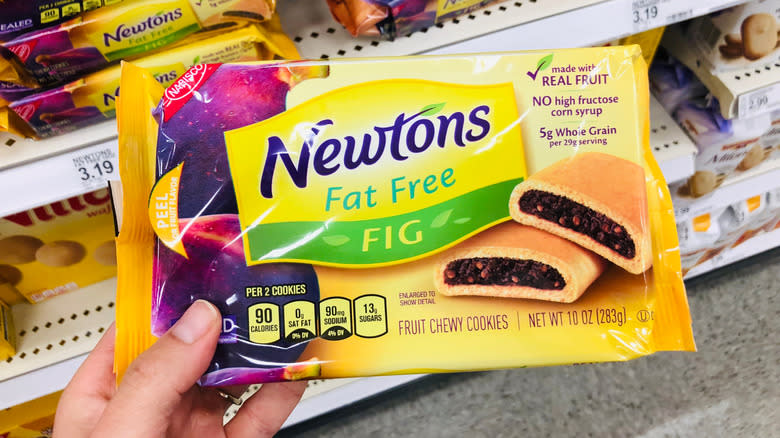
The ingredients and nutritional profile of Newtons varies depending on the product. In addition to the classic Fig Newton formula, there is also a strawberry flavor and a fat-free option. The strawberry flavor has a similar nutritional profile to classic Fig Newtons, but has a longer list of ingredients that lists invert sugar first, strawberry purée fourth, and includes caramel and red food coloring. While they have the same amount of sugar, all of the sugar in Strawberry Newtons is classified as added sugar, indicating that there is no naturally-occurring sugar in the strawberry purée as there is in figs.
Not surprisingly, fat-free Fig Newtons are lower in calories than classic Fig Newtons, containing 90 calories per each 29-gram serving compared to 100. They also have one extra gram of sugar and include glycerin, an ingredient derived from fat that provides smoothness, softness, and preserves moisture.
The brand dropped the word “Fig” from its title in the early 2010s, hoping to modernize the product and break free from a single flavor. However, aside from the strawberry option, the many flavors of Newtons that were once available (including blueberry, raspberry, and apple cinnamon) seem to be discontinued.
They’re Ultra-Processed

Even foods with healthy ingredients and a relatively good nutrition profile can be unhealthy due to processing. As Natalie Allen explained, “Ultra-processed food [has] added ingredients, such as sugar, salt, fat[,] and artificial colors or preservatives. Examples of these [foods] are soft drinks, salty snacks, packaged baked goods and hot dogs.”
There has been extensive research into the ill effects of ultra-processed food on human health. One study published in the British Medical Journal in May 2024 tracked over 100,000 people for more than 30 years who had no history of cancer, cardiovascular diseases, or diabetes and discovered that eating ultra-processed foods led to higher mortality. Ultra-processed meat and seafood showed the strongest associations with higher all-cause mortality, but desserts and breakfast foods (like Newtons) were also singled out as particularly harmful.
According to Allen, ultra-processed food is estimated to make up more than half of the calories Americans consume, and contributes to much of our sugar consumption. But she also noted that most foods have been processed to some degree to alter taste or increase shelf life. “My best advice,” she said, “[I]s to limit processed food when possible. Shop the farmer’s market, buy whole grains and eat fruits and vegetables. Ultra-processed [foods] are typically higher in fat, sodium and additives, while also being lower in nutritional value.” A quick way of assessing whether a food is ultra-processed is whether it was made with machinery or ingredients that you couldn’t have in your own kitchen.
They Can Still Be Part Of A Healthy Diet
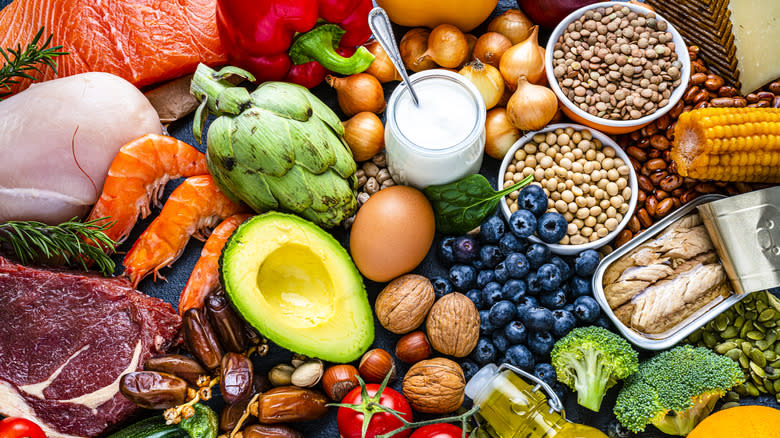
One of the key findings in the British Medical Journal study was that the negative impacts of ultra-processed foods can be mitigated by an overall healthy diet. Emily Van Eck and Natalie Allen confirmed this when we asked them about whether Fig Newtons could be part of a balanced diet. “If you like Fig Newtons, they can be [a] healthy part of a balanced diet and would make an easy and convenient snack, especially for on the go,” Van Eck said. “They contain whole grain flour and figs, both quite good for you. They’re mostly carbohydrates, so I’d probably suggest pairing them with protein and fat for a balanced and filling snack. Nuts, nut butter, yogurt, [cottage cheese, or string cheese] would all be a good fit.”
Allen shared similar advice. “In general, a serving of Fig Newtons is two cookies and this portion can fit into a balanced diet,” she said. “Cookies are typically high in sugar, so enjoy them in moderation.” Echoing the findings in the BMJ study, she added, “Diet is all about balance. Most of the time, choose whole unprocessed food. However, the occasional processed treat is okay, too. Enjoy your food, balance your plate and make snacks count with choices like fruit or unsalted nuts.”
Read the original article on Mashed
Signup bonus from





